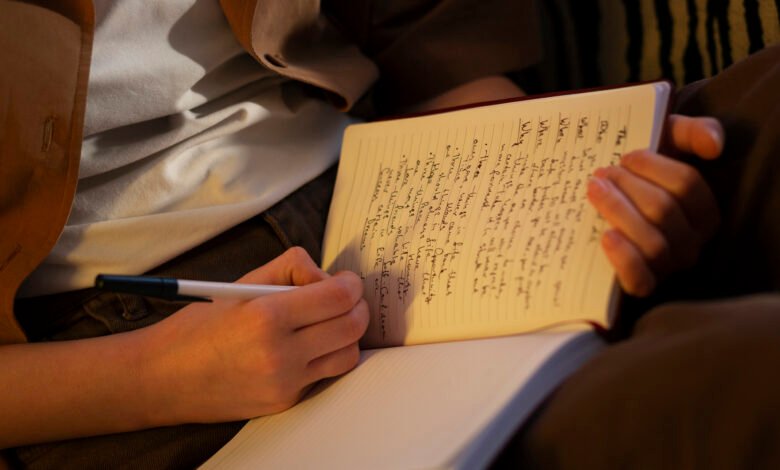The Melody of Words: Discovering the Soul of English Shayari

For centuries, the Urdu language has been the undisputed home of shayari, a poetic form that intertwines emotion, rhythm, and profound meaning to capture the complexities of the human heart. Its evocative imagery and intricate metaphors have captivated millions. But what happens when this beautiful art form transcends linguistic boundaries? Welcome to the world of English Shayari a contemporary and growing movement where the soul of traditional shayari finds a new voice in the global language of English. It is not a replacement for its Urdu predecessor, but rather a vibrant evolution—a bridge that allows the universal themes of love, loss, hope, and philosophy to resonate with a generation that thinks and feels in English. This article explores the nuances of this beautiful fusion, where Eastern poetic sensibilities dance with Western linguistic roots.
The Fusion of East and West: What Defines English Shayari?
At its core, English Shayari is not merely a direct translation of Urdu verses. The true essence lies in its ability to capture the spirit of shayari using the tools and vocabulary of the English language. Traditional shayari relies heavily on specific meters (beher), rhyme schemes (qafiya), and cultural references that are deeply rooted in South Asian traditions. English Shayari, while often paying homage to these structures, prioritizes the conveyance of deep emotion and poignant thought. It borrows the conciseness and the punch of the sher (a two-line couplet) and infuses it with modern, relatable imagery. A poet might use the metaphor of a “crashing server” to describe a broken heart or “the silent ping of a read message” to convey loneliness in the digital age. This fusion creates a unique poetic space that is both familiar and fresh, making the profound emotional depth of shayari accessible to a global audience without diluting its intensity.
Themes That Transcend Language: Love, Longing, and Life
The power of shayari, in any language, lies in its exploration of timeless, universal themes. English Shayari continues this rich tradition, giving voice to the emotions that define our existence.
-
Ishq (Love & Romance): This remains the most celebrated theme. English Shayari on love can range from the euphoric to the melancholic. It beautifully articulates the ache of separation (judai), the sweetness of union, the pain of unrequited feelings, and the quiet comfort of a deep connection. It finds new ways to say “I love you,” often with a depth and subtlety that straightforward prose cannot achieve.
-
Gham (Sorrow & Heartbreak): The poignant expression of sorrow is a cornerstone of classical shayari, and English Shayari masters this with raw vulnerability. It gives form to the emptiness of loss, the silence after a farewell, and the bittersweet memories that linger. This theme allows readers to find solace in shared sadness, reminding them that their pain is both seen and understood.
-
Zindagi (Life & Philosophy): Beyond romance, English Shayari often delves into philosophical musings about life’s journey. It questions existence, ponders over the passage of time, celebrates resilience, and offers quiet reflections on hope, change, and the human condition. These verses act as tiny lanterns of wisdom, illuminating the path for both the reader and the writer.
Crafting Your Own Verse: The Art of Writing English Shayari
Writing compelling English Shayari is an art that balances emotion with craftsmanship. The goal is to create a powerful impact with economy of words. Start by focusing on a single, strong emotion or a striking image. Instead of writing a long narrative, condense that feeling into a couplet. Use metaphors and similes—compare a fading memory to “an old photograph bleaching in the sun,” or a hopeful heart to “a single candle defying a storm.” Pay attention to the rhythm and flow of your lines; reading them aloud is the best test. While strict rhyme can be effective, don’t be afraid to use slant rhyme or focus on a powerful, thought-provoking concluding line (maqta). The most important ingredient is authenticity—let the verse flow from a genuine place of feeling.
The Digital Muse: How Social Media Fueled a Renaissance
The rise of English Shayari is inextricably linked to the digital age. Platforms like Instagram, Pinterest, and X (formerly Twitter) have become the new mushairas (poetic symposia). Poets and enthusiasts share their verses as text posts on aesthetically designed images or as short, impactful captions. Hashtags like #EnglishShayari and #PoetryCommunity connect a global network of writers and readers, allowing for instant feedback and collaboration. This accessibility has democratized the art form, encouraging countless budding poets to share their voices. The brevity of the form makes it perfect for the fast-paced consumption of social media, yet its depth encourages pause and reflection, creating a beautiful contradiction in the digital space.
Conclusion: A Universal Language of the Heart
English Shayari is more than a poetic trend; it is a testament to the evolving, borderless nature of art. It proves that the language of emotion is universal. By weaving the intricate emotional tapestry of Eastern poetry with the widespread accessibility of the English language, it creates a powerful medium for connection in our modern world. It honors the past while firmly planting itself in the present, offering solace, beauty, and a sense of shared humanity to anyone who has ever loved, lost, or pondered the stars. So, whether you are a seasoned poetry lover or a curious newcomer, dive into the world of English Shayari—you may just find the perfect words for a feeling you thought was indescribable.
Frequently Asked Questions (FAQ)
Q1: Is English Shayari as good as traditional Urdu Shayari?
It’s not a matter of being “better” or “worse,” but rather different. Urdu Shayari is unparalleled in its linguistic richness, cultural depth, and complex poetic rules. English Shayari captures the same essence and emotional core but expresses it through a different linguistic and cultural lens. Both are beautiful and valid forms of artistic expression.
Q2: I’m not a poet. Can I still enjoy or use English Shayari?
Absolutely! Many people enjoy reading and sharing English Shayari that resonates with their feelings. It’s a popular way to find the perfect caption for a social media post, to express a feeling to a loved one when your own words fail, or simply to find comfort in knowing others feel the same way you do.
Q3: What are some tips for appreciating English Shayari?
Don’t just read it—feel it. Read the lines slowly and let the imagery sink in. Try to identify the core emotion the poet is conveying. Pay attention to the metaphors and how they create a picture in your mind. The best shayari often has a layered meaning, so revisit it; you might discover something new each time.
Q4: Who are some popular English Shayari poets I can follow?
While the community is vast and many poets are discovered on social media, some prominent names and handles include R. M. Drake, r.h. Sin, and Atticus, whose works often embody the spirit of modern, accessible poetry similar to English Shayari. Exploring hashtags on Instagram is a great way to find new and diverse voices.



